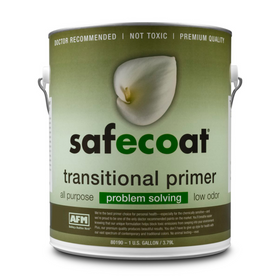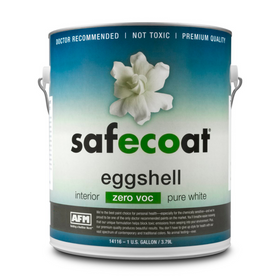
A Guide to Healthy Wood Finishes
Last Updated: Apr 11, 2025Your wood floors, furniture, wood accents like railings and moldings, and even your kitchen utensils should all be refinished regularly. Refinishing helps to protect them from wear, moisture, spills, and aging. Proper woodcare will keep your wood looking new long-term and make it a good candidate for reuse should you come to a time you're ready to part with it. An excellent finish also makes it possible to salvage and breathe new life into wood items purchased at construction reuse and thrift stores and garage sales.
Table of Contents
- How Do You Choose a Natural Wood Finish?
- How to Make Homemade Natural Wood Stains?
- What Is a Water-Based Finish?
- What Is a Natural Oil-Based Wood Finish?
- What Is a Tung Oil Wood Finish?
- What Is a Linseed Oil Wood Finish?
- What Is a Jojoba Oil Wood Finish?
- Walnut Oil Wood Finish
- What Is a Wax Based Wood Finish?
- What is a Beeswax or Soy Wax Wood Finish?
- What Is a Carnauba Wax Wood Finish?
- What Is a Shellac Wood Finish?
- How Do You Apply a Wood Stain or Finish?

Just like paint and stain, wood finishes may contain harmful volatile organic compounds (VOCs). You can learn to recognize the good from the bad. VOCs will pollute your indoor air and can lead to respiratory problems like asthma, headaches, and irritation to the skin and eyes. Even natural oil or water-based wood finishes are susceptible to toxic ingredients added to encourage quicker dry time. Look for wood finishes made with a natural solvent like water or linseed oil.
How Do You Choose a Natural Wood Finish?
Natural wood finishes have been used for centuries and are making a comeback as more homeowners and builders look to use natural, non-toxic products. Look for water-based, oil-based, wax-based, and shellac wood finishes as they contain low to no VOCs and come from renewable sources.
How to Make Homemade Natural Wood Stains?
Mixing up your own natural wood finish is easy and limits waste as you only need to make what's needed. If you prefer to buy a ready-made wood finish, look for those containing no more than 250 grams of VOCs per liter. Green Seal-11 certified wood finishes are easily spotted by their certification logo that promises a limited VOC concentration.
It's also important to consider the wood you're finishing since softwood, like pine, will soak up finish quickly. In contrast, hardwood, like oak or maple, will absorb more slowly.

What Is a Water-Based Finish?
Water-based wood finishes are an excellent choice for their durability and easy to clean up with just soap and water. These finishes often contain low to no VOCs, dry clear quickly, and will resist yellowing with time. Some store-bought water-based wood finishes can contain toxic solvents to increase drying time, so be sure you read the label!
What Is a Natural Oil-Based Wood Finish?
Plant-based oil wood finishes penetrate deep into the wood for long-term protection and preservation. Natural oil finishes are low in VOCs. These products have the additional benefits of increasing the wood's richness and translucence without leaving a surface film behind.
Oil-based wood finishes can take up to a week to dry and generally require multiple coats to achieve the desired finish. Some manufacturers include a toxic solvent to decrease cure time, so be sure to check that label. There are a variety of options in natural oil-based wood finishes. Still, most will need to be reapplied every year for the best results. And remember, never use vegetable-based oils like olive oil as these will spoil and take on a stale scent.
It's also important to note that oil finishes are highly flammable. If you do need to heat them, be very careful. Never heat an oil finish that has been mixed with a drying agent like mineral spirits.

What Is a Linseed Oil Wood Finish?
Linseed oil is derived from flax seed and cures in a beautiful satin finish with a golden color, becoming more of an amber tone with time. It is an excellent choice for indoor wood, including moldings, paneling, beams, and furniture. It can be used to finish wood floors but will need to be reapplied twice yearly for the best protection.
Linseed oil is waterproof and will protect the wood and prolong its life. Wood treated with linseed oil can, however, still be scuffed. This wood finish does take about three days to dry per coat, so be sure to give your project plenty of time. You will find store-bought linseed oil that has been boiled, heat-treated, or polymerized to decrease dry time, but these contain a toxic metallic agent. Look for raw linseed oil that does not contain VOCs or other additives.
What Is a Jojoba Oil Wood Finish?
Jojoba oil is an excellent choice for protecting kitchen food-contact wood products like wooden spoons, bowls, and cutting boards. It can also be used on beams, framing, garden tool handles, and furniture. Jojoba oil is VOC-free and penetrates deep into the wood to condition and prolong its life, but it can still be scuffed.
Walnut Oil Wood Finish
Walnut oil is another wood finish suitable for food-contact wood products, but should not be used by families with nut allergies. This oil will penetrate deep into the wood, but can still scuff.
Walnut oil requires 3-4 coats for an excellent finish on decorative wood-like beams and moldings and six or more coatings for heavy use wood items like furniture and cutting boards.

What is a Beeswax or Soy Wax Wood Finish?
Beeswax and soy wax have various uses, one of which is sealing the wood to extend its life. These waxes are hard solids that need to be melted and mixed with natural oils like tung oil or jojoba oil.
What Is a Carnauba Wax Wood Finish?
Carnauba wax is derived from the leaves of Brazilian palm trees and is more commonly used to wax cars and surfboards. This wood finish is super durable, dulls over time, and won't flake or peel.
What Is a Shellac Wood Finish?
Shellac is made from the secretion of the female Lac bug and a solvent additive. This renewable wood finish is extra hard and durable against scuffing, heat, and moisture. For an even more durable finish, follow up a shellac finish with a water-based sealer.
Shellac can be tinted with color for a unique wood finish and is an excellent choice for protecting wood furniture. When mixed with an ethanol solvent, shellac can be irritating, but the effects will dissipate quickly. Shellac mixed with methanol or wood alcohol is highly toxic and should be avoided.
Your wood furniture and decorations will last lifetimes if refinished every two years or so. You'll notice when a new coat is needed when your wood starts looking dry or discolored. Unlike varnish, there is no need to sand the surface each time. Simply wipe it down with a clean, damp cloth, let it dry completely, apply a new coat, and wipe off the excess after 5 minutes.
Laura Bourland
Laura grew up in the California suburbs, far removed from environmentalism, but nature always has a way. She uprooted her life in 2015, moving to the countryside of Washington to live a more sustainable and simple life on 12 acres. She and her fiancee are learning on the job as they attempt everything from gardening and natural pest control to eco-friendly building and home improvement.













